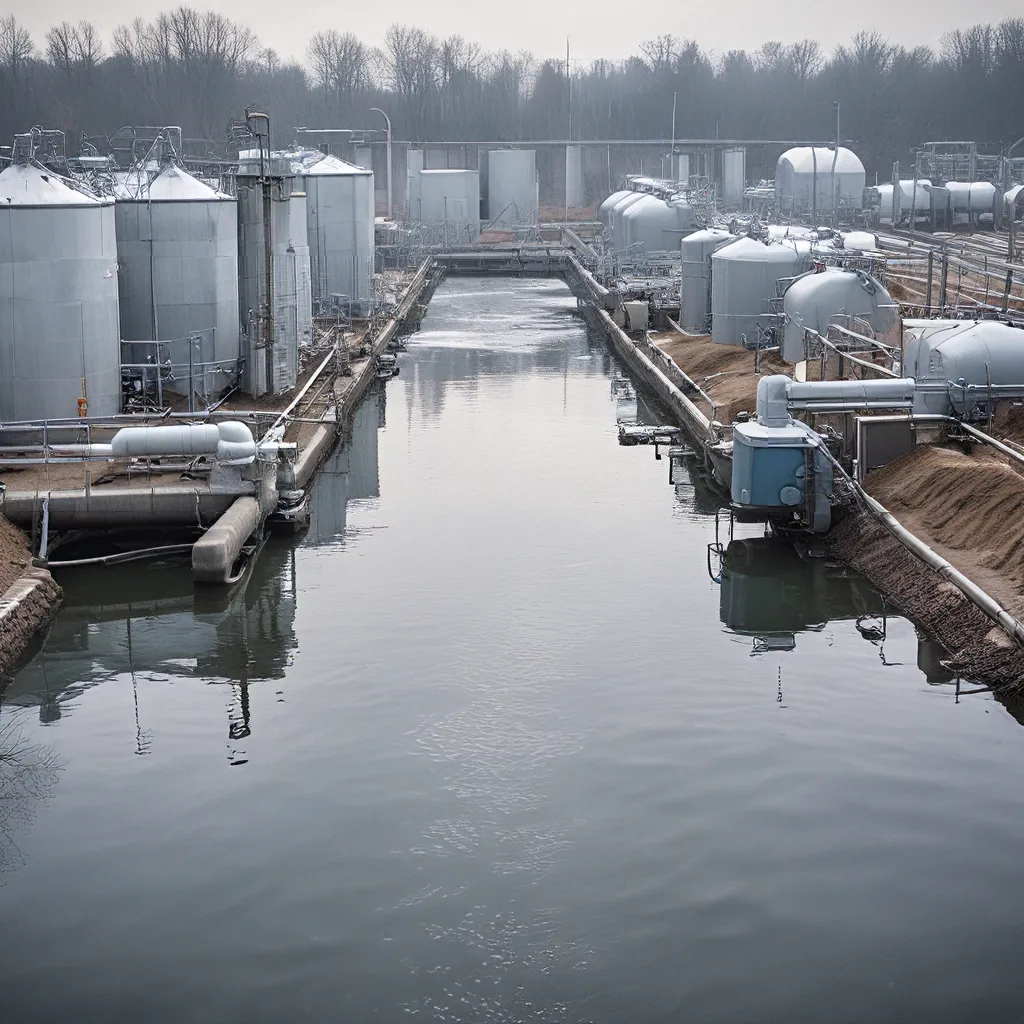
As someone who has a deep fascination with the world of wastewater treatment, I’m constantly amazed by the incredible advancements happening in this field. And let me tell you, when it comes to tackling pharmaceutical pollutants, the strategies being developed are nothing short of revolutionary.
Think about it – the ubiquity of pharmaceutical drugs in our modern lives is staggering. From the ibuprofen we take for a headache to the antidepressants that help manage our mental health, these substances have become an integral part of our daily routines. But what happens after we flush them down the drain?
Well, my friends, that’s where the real adventure begins. Because these pharmaceutical pollutants don’t just disappear – they often end up in our waterways, posing a significant threat to the environment and public health. And that’s where the wastewater treatment wizards come in, working tirelessly to develop innovative solutions to this pressing issue.
Unraveling the Pharmaceutical Pollution Puzzle
Let’s start by taking a closer look at the problem itself. Pharmaceutical pollutants are a diverse group of chemicals that include everything from antibiotics and hormones to painkillers and antidepressants. These substances can have a profound impact on aquatic ecosystems, disrupting the delicate balance of the natural world.
Imagine a pristine lake, teeming with vibrant fish and other aquatic life. But then, imagine that lake being contaminated with a cocktail of pharmaceutical compounds. The effects can be truly devastating – from the feminization of male fish to the development of antibiotic-resistant bacteria, the consequences can be far-reaching and long-lasting.
It’s a sobering thought, isn’t it? But fear not, because the wastewater treatment experts are on the case, and they’re not about to let these pollutants win without a fight.
Emerging Strategies: Tackling Pharmaceutical Pollutants
One of the most promising emerging strategies in the fight against pharmaceutical pollutants is the use of advanced oxidation processes (AOPs). These innovative techniques harness the power of highly reactive chemicals, like ozone and hydrogen peroxide, to break down and eliminate these stubborn contaminants.
Researchers have found that AOPs can be incredibly effective at removing a wide range of pharmaceutical compounds, from antidepressants to antibiotics, with impressive removal rates of up to 90% or more.
But that’s not all – the wastewater treatment gurus are also exploring the potential of membrane filtration technologies, which use semi-permeable membranes to physically separate pharmaceutical pollutants from the water. These systems can be incredibly efficient, with the ability to remove up to 95% of certain compounds.
And let’s not forget about the power of biological treatment methods, where specialized microorganisms are used to break down and metabolize these pharmaceutical compounds. It’s a fascinating process, and one that’s being constantly refined and optimized by the brilliant minds in the wastewater treatment field.
But the real game-changer, in my opinion, is the emergence of integrated treatment systems, which combine multiple technologies to create a powerful and comprehensive approach to tackling pharmaceutical pollutants. By leveraging the strengths of different methods, these integrated systems can achieve unprecedented levels of removal efficiency and versatility.
Navigating the Regulatory Landscape
Of course, addressing the challenge of pharmaceutical pollutants in wastewater isn’t just about developing cutting-edge technologies – it also requires navigating a complex regulatory landscape. And let me tell you, the folks in the wastewater treatment industry are more than up to the task.
The White House has made it a top priority to tackle the climate crisis, which includes addressing the issue of pharmaceutical pollutants in our water systems. And with the support of policymakers and regulatory bodies, the wastewater treatment industry is poised to make significant strides in this critical area.
But it’s not just about government support – the industry is also taking a proactive approach, working closely with researchers, healthcare providers, and pharmaceutical manufacturers to develop comprehensive strategies that address the problem at every stage of the supply chain.
The Future of Wastewater Treatment
As I look to the future, I can’t help but feel a sense of optimism and excitement about the advancements happening in the world of wastewater treatment. The innovative strategies being developed to tackle pharmaceutical pollutants are just the tip of the iceberg, and I can’t wait to see what the brilliant minds in this industry come up with next.
One thing’s for sure – the team at Alpha Wastewater is right at the forefront of these exciting developments. With their cutting-edge technologies and their unwavering commitment to environmental protection, they’re helping to pave the way for a cleaner, healthier future for all of us.
So, my friends, let’s raise a glass (of clean, pharmaceutical-free water, of course) to the unsung heroes of the wastewater treatment industry. They may not be household names, but their work is truly changing the world, one flush at a time.